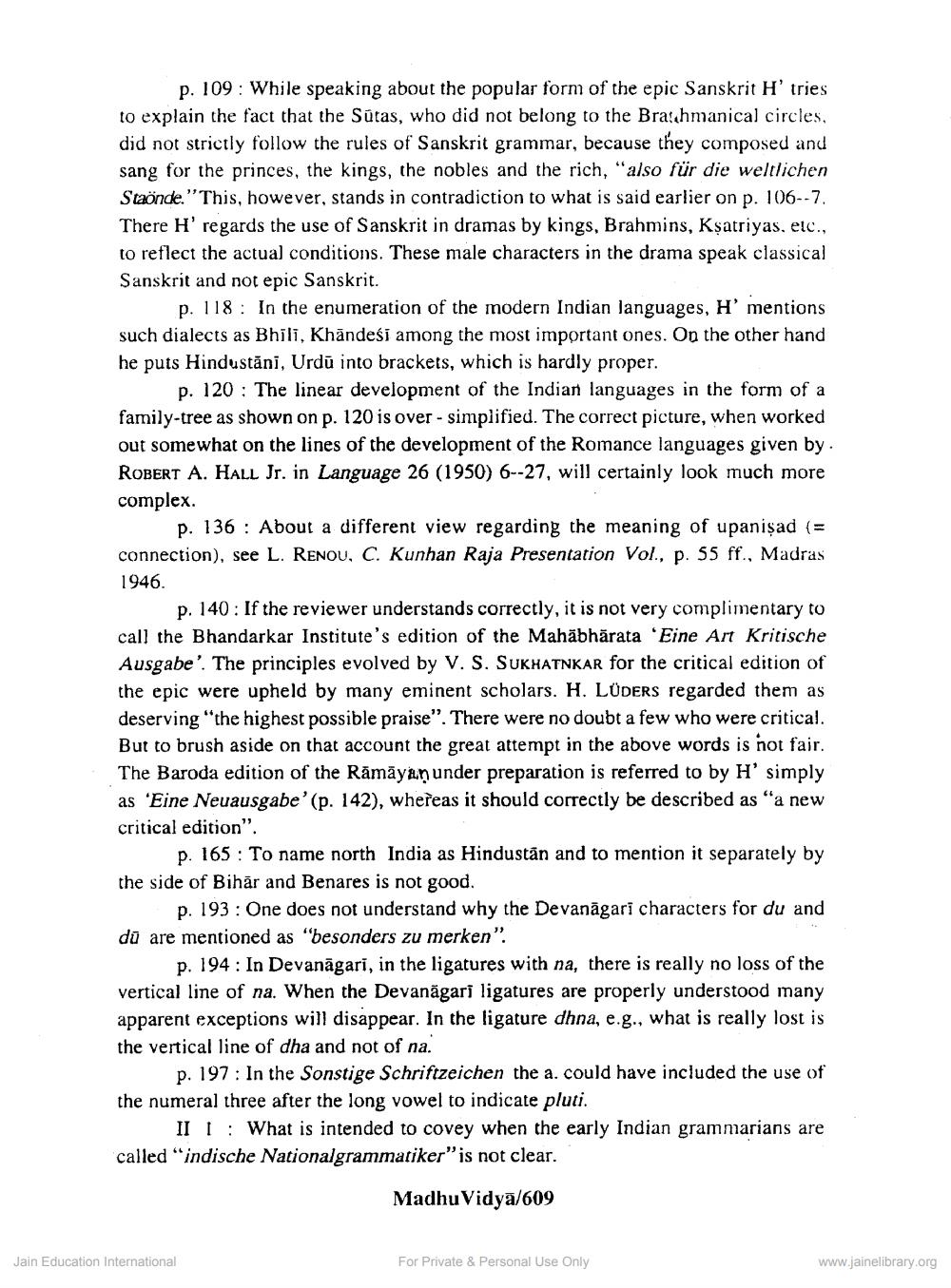________________
p. 109 : While speaking about the popular form of the epic Sanskrit H'tries to explain the fact that the Sūtas, who did not belong to the Brahmanical circles, did not strictly follow the rules of Sanskrit grammar, because they composed and sang for the princes, the kings, the nobles and the rich, "also für die weltlichen Staönde."This, however, stands in contradiction to what is said earlier on p. 106--7. There H' regards the use of Sanskrit in dramas by kings, Brahmins, Ksatriyas, etc., to reflect the actual conditions. These male characters in the drama speak classical Sanskrit and not epic Sanskrit.
p. 118: In the enumeration of the modern Indian languages, H' mentions such dialects as Bhili, Khāndesi among the most important ones. On the other hand he puts Hindustāni, Urdū into brackets, which is hardly proper.
p. 120 : The linear development of the Indian languages in the form of a family-tree as shown on p. 120 is over - simplified. The correct picture, when worked out somewhat on the lines of the development of the Romance languages given by. ROBERT A. HALL Jr. in Language 26 (1950) 6--27, will certainly look much more complex.
p. 136 : About a different view regarding the meaning of upanişad (= connection), see L. RENOU, C. Kunhan Raja Presentation Vol., p. 55 ff., Madras 1946.
p. 140 : If the reviewer understands correctly, it is not very complimentary to call the Bhandarkar Institute's edition of the Mahābhārata 'Eine Art Kritische Ausgabe'. The principles evolved by V. S. SUKHATNKAR for the critical edition of the epic were upheld by many eminent scholars. H. LÜDERS regarded them as deserving the highest possible praise". There were no doubt a few who were critical. But to brush aside on that account the great attempt in the above words is not fair. The Baroda edition of the Rāmāyan under preparation is referred to by H' simply as 'Eine Neuausgabe'(p. 142), whereas it should correctly be described as "a new critical edition".
p. 165 : To name north India as Hindustan and to mention it separately by the side of Bihār and Benares is not good.
p. 193 : One does not understand why the Devanāgari characters for du and du are mentioned as "besonders zu merken".
p. 194: In Devanagari, in the ligatures with na, there is really no loss of the vertical line of na. When the Devanāgari ligatures are properly understood many apparent exceptions will disappear. In the ligature dhna, e.g., what is really lost is the vertical line of dha and not of na.
p. 197: In the Sonstige Schriftzeichen the a. could have included the use of the numeral three after the long vowel to indicate pluti.
II : What is intended to covey when the early Indian grammarians are called "indische Nationalgrammatiker" is not clear.
Madhu Vidyā/609
Jain Education International
For Private & Personal Use Only
www.jainelibrary.org




